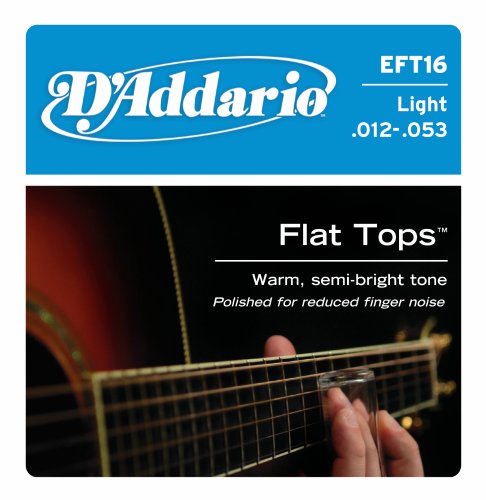D'Addario EJ16 Phosphor Bronze Acoustic Guitar Strings, Light Review


Price : $13.19
D'Addario EJ16 Phosphor Bronze Acoustic Guitar Strings, Light Feature
- D'Addario's most popular acoustic guitar string set, known for its superb, long-lasting tone and comfortable playability
- Preferred for its warm, bright, and well balanced acoustic tone
- Environmentally friendly, corrosion resistant packaging for strings that are always fresh
- Made in the U.S.A. for the highest quality and performance
- String Gauges: Plain Steel .012, .016, Phosphor Bronze Wound .024, .032, .042, .053
- The six "edges" of the core wire bite into the softer wrap wire, securing it all along its length
- The hexagon core is just one of the reasons D'Addario strings are "Better by Design."
D'Addario EJ16 Phosphor Bronze Acoustic Guitar Strings, Light Overview
D'Addario Phosphor Bronze Light Acoustic Guitar Strings For a Warm, Balanced Sound
When it comes to your guitar, you need the right strings. D'Addario Phosphor Bronze Acoustic Guitar strings are acclaimed worldwide for their superb, long-lasting tone. Phosphor Bronze was introduced to string making by D'Addario in 1974 and has become synonymous with warm, bright, and well balanced acoustic tone. D'Addario's most popular acoustic guitar strings.
History of Quality and Sound
The first metal guitar strings were invented in the 1920s and revealed to the world in the 1930s. Ever since then, guitarists have not looked back. These guitar strings are made from a Phosphor Bronze alloy that produce a warm balanced sound when properly strung. Each strum and pluck of the Phosphor Bronze string pulls the most sensitive, expressive tone that brings out the very best in guitars.
String Tension 101
Modern music has become so sub-divided and fragmented that there is no longer one turn-key string solution for every playing style or desired sound. At one point in time, there were no standardized string gauges, but John D’Addario Sr. changed all that in 1939 with the introduction of light, medium and heavy gauges for acoustic instruments.
Throughout most of the 20th century, standardized electric and acoustic guitar gauges were sufficient for needs. Occasionally, new gauges (often hybrids of existing sets), were created for specific purposes and string offerings from manufacturers became immense. However, today there are so many popular styles and trends that it is often necessary for players to go outside of standard gauge sets to get the effect they desire. Whether it’s open tunings, drop tunings, baritone guitars, 5-string guitars, 7-string guitars or a variety of other reasons, many players are opting to go their own way and customize their string selection and sound.
Why Do You Need To Know About String Tension?
D’Addario receives hundreds of inquiries each year from players who have questions or problems to solve related to string gauges or tensions. To assist players in determining the appropriate string for their needs, we created the Online String Tension Guide, a complete book of charts for determining the appropriate string to be used in just about any situation. The guide includes formulas for determining string tension for any string on any instrument type or scale length using three basic measurements: the Unit Weight, the Scale Length of the instrument, and the Frequency of the string. If scientific formulas aren’t your strong point, we have pitch/tension charts for just about every string we make, including electric guitar, acoustic guitar, classical guitar, and bass guitar.

Cheap Samsung Unlocked Phones Free Shipping























